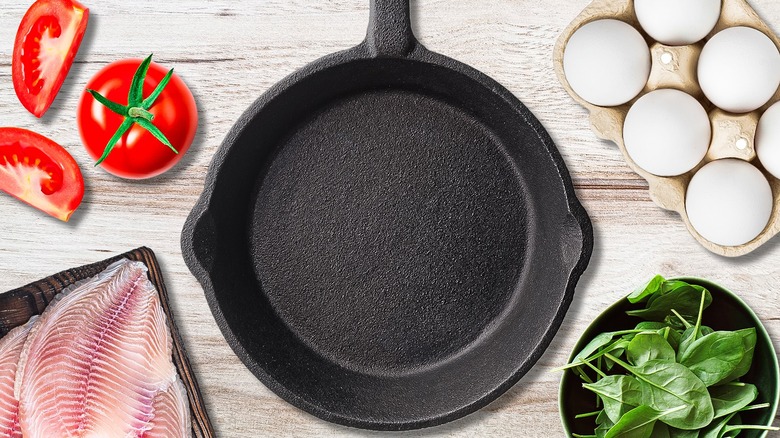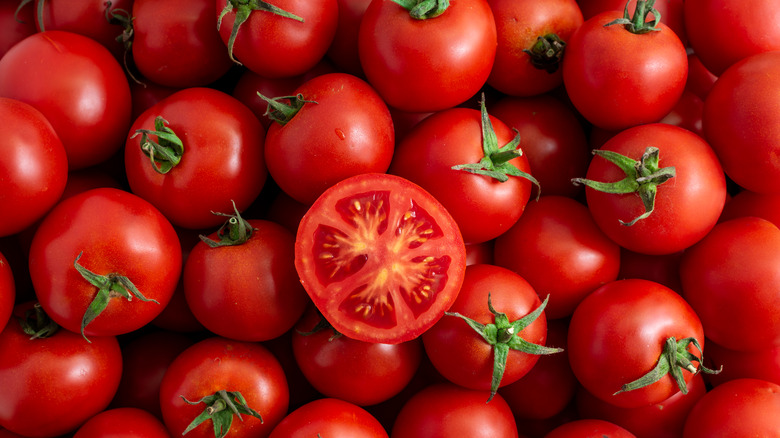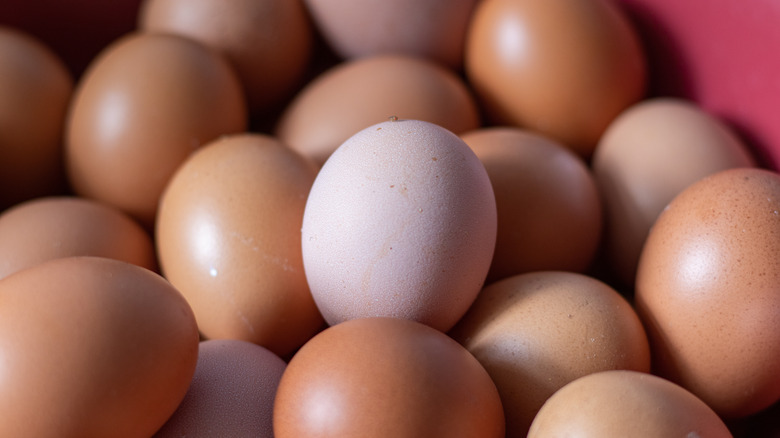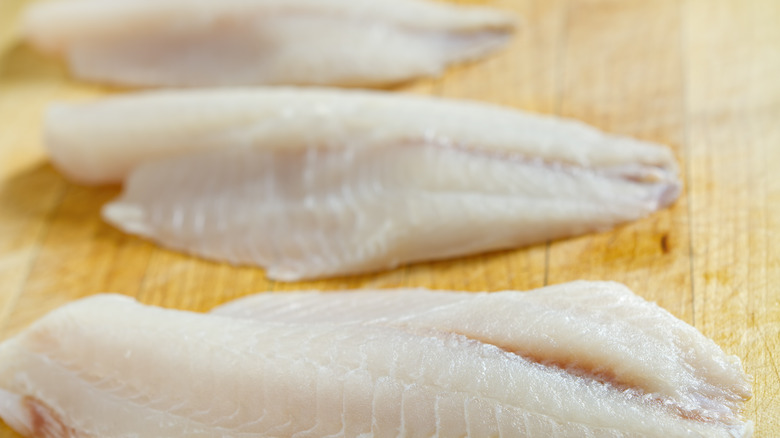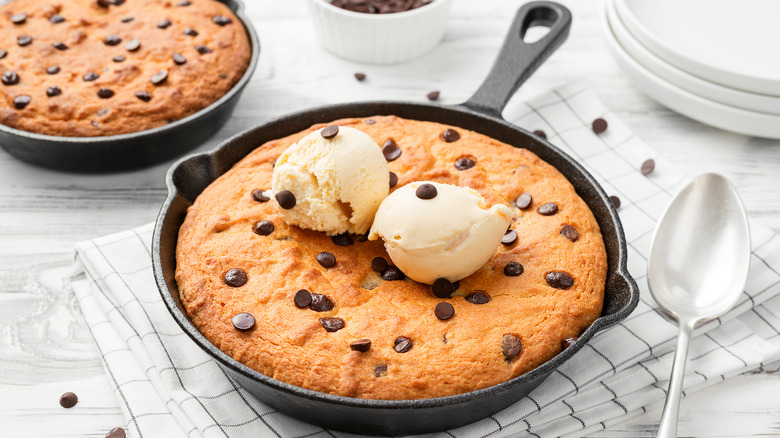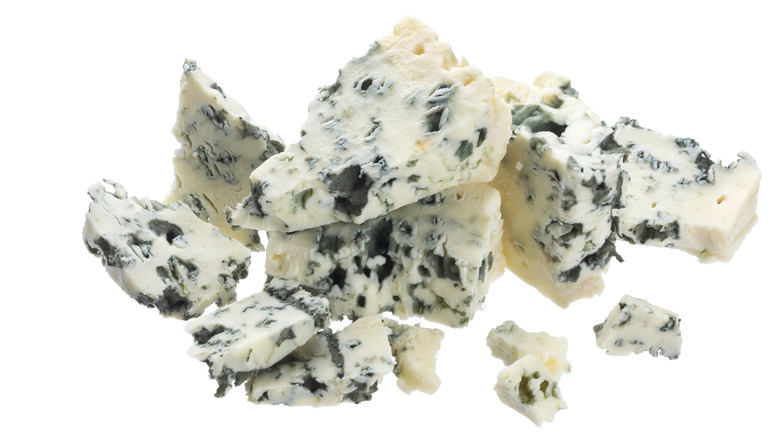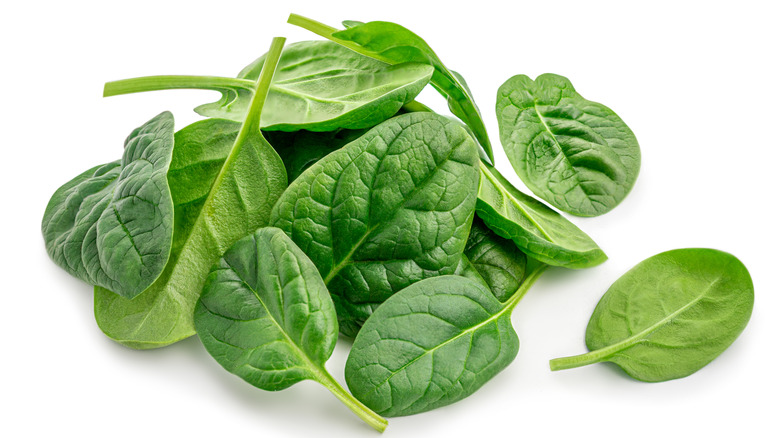6 Ingredients This Personal Chef Would Never Use In Cast Iron
No kitchen is complete without a cast iron skillet. Known for its ability to retain and distribute heat evenly, cast iron is the stuff many food traditions are built upon. These skillets are so treasured, they're often passed down from generation to generation. Whether you're making a giant chocolate crinkle cookie, a quick and easy stir-fry, or roasting a whole chicken, cast iron is a great choice for preparing a variety of dishes. Their durability makes them dependable all-around workhorses in the kitchen.
In culinary school, I learned the nuances of cooking in cast iron, the tips you need when cooking with it, the best uses for your cast iron skillet, and why it's important to cook with cast iron pans often. When I cooked for clients as a personal chef, I typically brought my own pots and pans — but if I found cast iron cookware in their kitchen, I'd use that instead if it was the better option.
As versatile as it is, it should not be your first choice for all tasks. There are some foods that are best cooked in pans made of other materials. For best results, keep these foods out of your cast iron pots and pans.
1. Tomatoes (unless it's quick)
Ripe tomatoes are known for being sweet, but they're actually a highly acidic food. On the pH scale, which measures acidity, anything with a pH less than 7 is considered acidic, and tomatoes have a pH of 4. The acid in tomatoes can cause two big problems when they're cooked in cast iron. First, the acid can damage the layer of seasoning that is integral to cast iron cooking. The seasoned layer, created when fat is heated in cast iron, is what gives cast iron its durability and nonstick coating. Cooking acidic foods in cast iron can also have a negative effect on flavor. The acid can cause the iron in the pan to leach its flavor into the food you're cooking, giving it a bitter, metallic taste.
The trick to cooking tomatoes in cast iron is to make it quick. It can take between 15 and 30 minutes for the metallic flavor to occur, so a quick saute of tomatoes is likely fine. You should avoid preparing any tomato-based dishes that require a long cooking time in cast iron.
A word of caution: It's not just tomatoes that can be problematic in cast iron. Any foods that are highly acidic can cause problems when cooked in cast iron. Be careful when you're cooking with wine, lemon juice, or vinegar because they can have the same effects on cast iron as tomatoes.
2. Eggs
Choosing the right pan when you're cooking eggs is a make-or-break decision. Eggs are especially sticky, so a nonstick surface is a necessity. If you're considering cooking eggs in a brand-new cast iron pan, think again. Without the non-stick protection, which only comes with frequent use and seasoning, you'll spend more time scraping your eggs from the surface of the pan than eating them.
Why are eggs so sticky? The protein in the eggs seeps into the tiny pores in the cast iron — and when heated, they stick. Even in a well-seasoned cast iron pan, cooking eggs can be a messy challenge. You can increase your chance of success and prevent eggs from sticking to a cast iron skillet by using plenty of oil, enough to coat the bottom of the pan. You should also make sure your pan is hot enough.
Eggs cook quickly no matter what kind of pan you prepare them in, but cast iron's exceptional heat retention can make it easy to overcook or burn your eggs. Make your life easier and leave your cast iron in its place when it's time to cook your eggs.
3. Fragile fish
Fish can be prepared in a variety of ways, from grilling to poaching to baking. Pan-frying or sauteing fish on your stovetop is another popular option. It's quick and simple, and it can result in flavorful fish with a crispy crust and a flaky, tender center. Believe it or not, how your pan-seared fish turns out also depends on the type of pan you choose to sear it in, especially if that pan is cast iron.
Hardy fish like mahi mahi, tuna, and swordfish are thick and sturdy enough to stand up to the high temperatures that often come with cast iron. Thinner fish, on the other hand, can be difficult to prepare correctly in a cast iron pan. Cast iron pans, especially those that don't have the benefit of a smooth, seasoned surface, may have a slightly bumpy surface that can cause thin, delicate fish like tilapia and flounder to break apart as they cook. Save the flaky fish for pans made of stainless steel or other materials.
4. Sweet foods after savory
Part of the appeal of cast iron pans, especially skillets, is the wonderful flavor that builds up gradually in the pan each time it's used. The iron actually absorbs a little flavor from every food you cook in it. This is part of what makes foods cooked in cast iron taste so much more delicious. Additional flavor is a great thing, but it's important to consider the flavors that might be lingering in your cast iron pans before using them for some dishes, like desserts.
Cast iron skillets are excellent for baking up treats like gooey cookies (think: a giant PB&J skillet cookie) and moist cakes (such as this ginger pear cake recipe), but you probably don't want your sweets to take on the flavors of the fish you fried in your skillet for last night's dinner. Imagine frying salmon in cast iron one day and then baking up a huckleberry cobbler in that same pan. You run the risk of baking up a fish-flavored cobbler.
The simple way to avoid this sweet and savory disaster is to buy two cast iron skillets. You can use one for all of your savory dishes and reserve the second just for desserts. Just be sure to store them separately so you don't get confused as to which one is which.
5. Smelly foods
In addition to absorbing flavors, cast iron's porous composition also makes it easy for your pans to absorb the aromas of the foods you cook. The more pungent or aromatic the food is, the easier it is for your cast iron to absorb the scent, which is why many cooks advise keeping aromatic foods out of your cast iron pans. Foods with strong smells like fish, peppers, garlic, and smelly cheeses are the ones most likely to leave behind a malodorous scent. This may not seem like a bad thing until you think about your perfectly sauteed salmon filet smelling like the blue cheese sauce you made to go with the steaks you made for last night's dinner.
You can minimize the transference of unpleasant odors from one dish to another by cleaning your pan thoroughly after each use. If that doesn't work, you can place your skillet in a 400-degree-Fahrenheit oven for around 10 to 15 minutes.
6. Spinach and other foods high in oxalate
When it comes to foods to avoid cooking in cast iron, high-oxalate foods should be at the top of the list. Don't let the term intimidate you. If you've ever cooked food, usually vegetables, in cast iron and they've ended up off in color, you're already familiar with oxalate. It's simply a naturally occurring acid found in plants, leafy greens, and some fruits and nuts. It's also present in potatoes, beets, soy, and rhubarb. Our bodies also naturally produce some oxalate.
The problem with cooking foods high in oxalate in cast iron lies in science: A chemical reaction occurs between the oxalate in the food and the iron in the pan. This reaction can cause these foods to lose their natural color and turn a dull, unappetizing shade of brown. The food is still safe to eat — and for most people, oxalate is not problematic. But if you have health conditions like kidney stones or digestive issues, check with your doctor about consuming foods that are high in oxalate.
